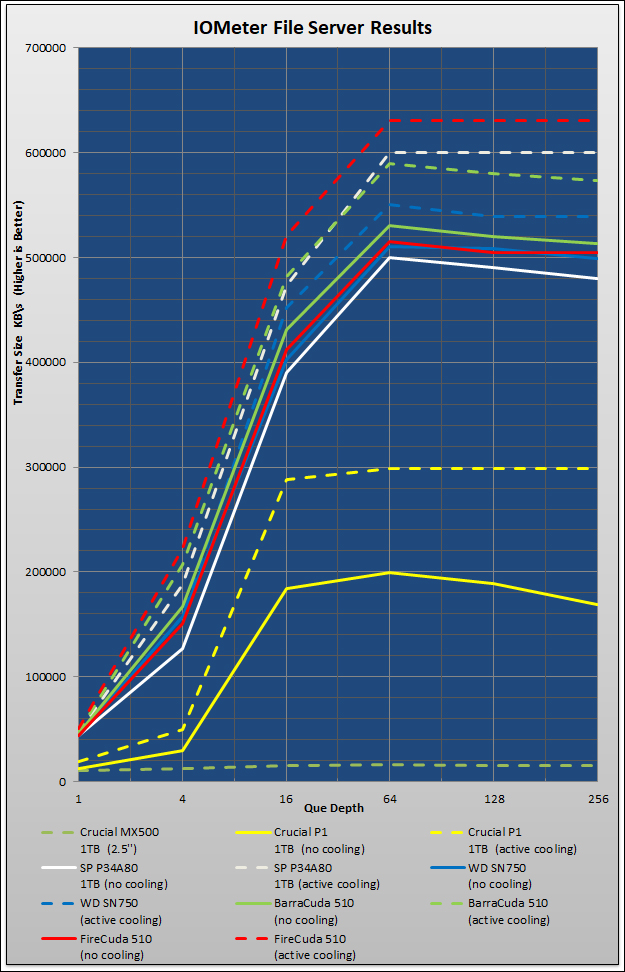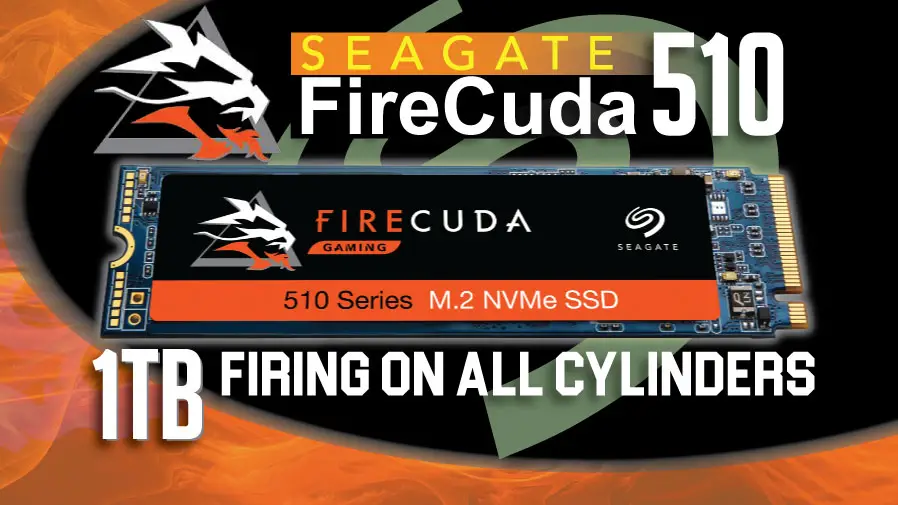To investigate the impact has on overall performance we have used a slightly modified version of our standard IOMeter test. Precisely we have run 8 test runs per device (1,4,16,64,128,256 queue depth) each test having 8 parts, each part lasting 60 min w/ an additional 20 second ramp up. The 6 subparts were set to run 100% random, 75% read 25% write; testing 512b, 4k,8k,16k,32k,64k size chunks of data. When each test is finished IOMeter spits out a report, in that reports each of the 6 subtests are given a score in I/Os per second. The results for the first two test runs/hours are discarded and only the last 6 run reports are averaged.
The two different result for each device in the chart are the results of the above test run with and without additional cooling. For “no cooling” the M.2 device in it’s out of the box configuration is installed in open test bed with no cooling and underneath a large (and hot running) video card. For “active cooling” results the same device has been installed in a PCIe adapter card w/ heatsink and active cooling via a 120mm fan pushing air over both sides of the M.2 card. These results represent the best- and worst-case scenario for any M.2 solid state drive. They are not indicative of average or typical real-world performance. Simply the best and worst a drive has to offer.












